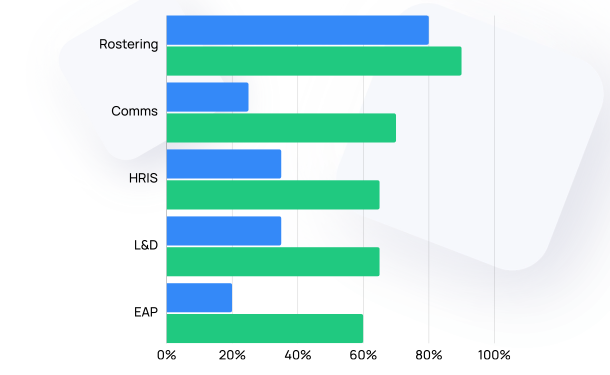One App, One Interface
One App, One Interface
Introduction
Take a look at your smartphone and count your apps. There’s a fair few of them. In fact, research shows that a person has an average of 42 apps on their phone1. Now think about how many apps you use regularly, how many occasionally and how many you’ve maybe opened once-upon-a-time. Would you believe that most people only use between 1 – 42 apps on a regular basis?
Further research indicates that for every 4 apps installed, 1 is never even used3. The study certainly highlights the general difficulties in attracting people to install and use new apps.
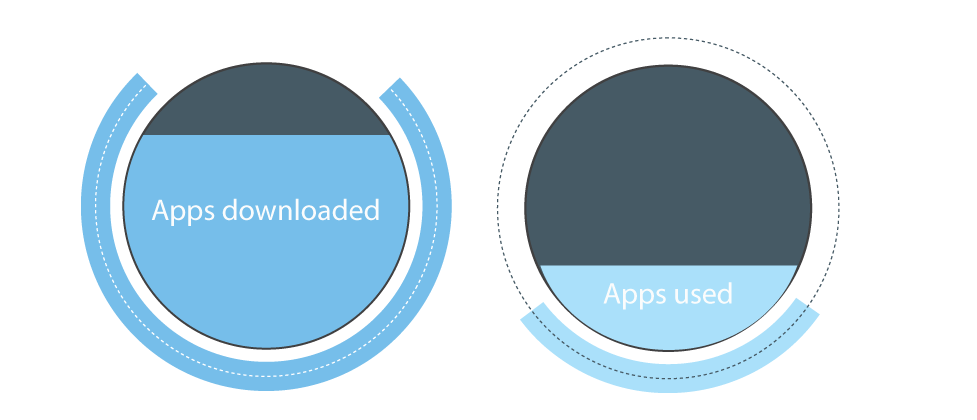
With these statistics in mind, and with the odds stacked against user adoption, why are businesses and enterprise software vendors so focused on developing lots of small ‘micro-apps’ for employees to access systems, processes and information? For example, a manager wishing to view the latest sales report would need to download, and login to their sales report app. To view payslips, employees would need to install the mobile app for payslips. To see company policies - yes, you guessed it, a company policies app. And so on.
The purpose of this article is to explore the key challenges occurring with the proliferation of micro-apps in enterprise and to highlight why the ‘one app, one interface’ strategy delivers significantly more value to the business, to IT and to the end-user.
The three key issues underpinning the argument are:
1) Time: How long does it take to develop and implement a new app? How much time is involved in maintaining existing apps?
2) Cost: What is the cost of developing, upgrading and maintaining the app over its lifecycle?
3) User Experience: How easy is it for the user to download, login and actually use the app?
The following key points address why the one app, one interface is preferred over a many micro-app strategies.
Time
How long does it take to develop and implement a new app?
One of the key benefits emerging from the pro-micro-app camp relates to the fast turn-around time in developing and delivering a small mobile app to the business. This applies to software vendors developing apps for their systems or for companies developing custom mobile apps for their employees.
While it is true that smaller apps take less technical time to develop, many auxiliary setup tasks absorb large amounts of time and aren’t budgeted into the process. These tasks are related to security testing and hardening, system integration testing, perfecting user authentication, third party penetration testing, user acceptance testing, group piloting, marketing and change management activities to drive user adoption and education. The time and resources associated with these auxiliary tasks are often underestimated, are critical to the success of the app, and most importantly, the overheads associated with these tasks are repeated for each individual app. Therefore, the proliferation of micro-apps leads to significantly more time investment when compared to a single app as the auxiliary tasks are eliminated with a single app.
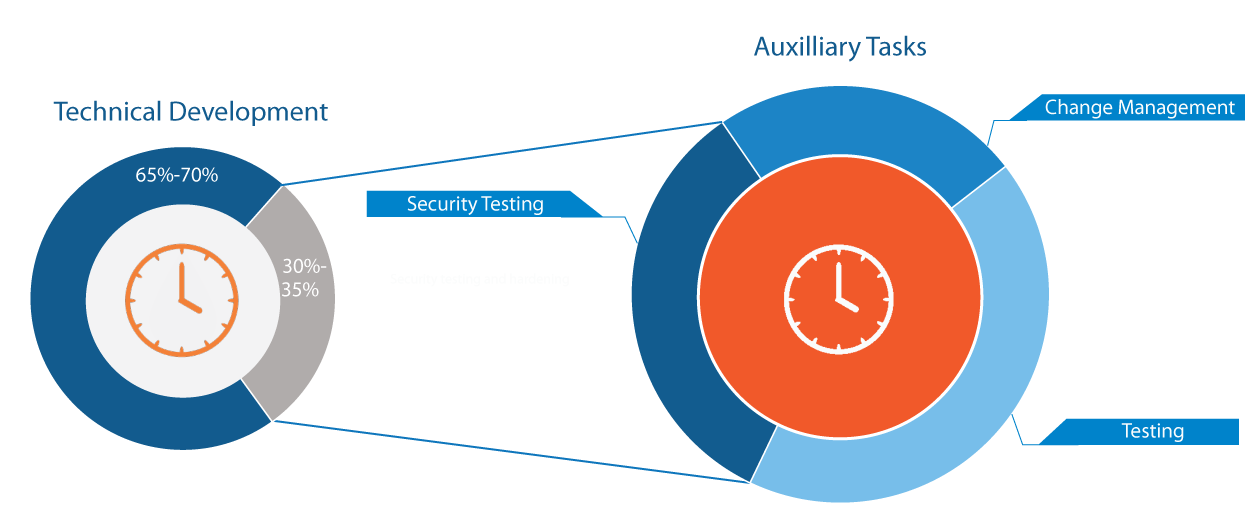
How much time is involved in maintaining existing apps?
Mobile apps are a unique segment of the IT landscape because of their ongoing requirement for maintenance and updates resulting in a never-ending ‘app lifecycle’. App updates are resource-intensive and require ongoing testing to ensure they are safe to release back into production. With more apps, the job of maintaining apps grows exponentially.
For example, if you were to accrue 15 micro-apps, that are compatible with the 3 mainstream devices (Apple, Android, Windows), then you’re really managing 45 apps as each requires its own maintenance plan. Therefore, every time there is a new update to your app, to your backend system, or to your phone operating system (which occurs for Mumba every month) the upgrade, testing and rollout process must be repeated for each operating system. There’s no wonder why custom app developers promote many micro-apps; there’s a never-ending pipeline of maintenance work. A reduced number of apps has considerable reductions in the time and resources involved in their maintenance.
Cost
How much does it cost to develop a new app?
While the initial costs associated with developing a small micro-app may seem more attractive, these costs should not be considered in isolation. Developing secure mobile apps for business is a complex and expensive exercise regardless of the app size. Research has indicated that the average cost to develop an app for business is $270,000 USD4.
The expense involved in developing an app (excluding the testing and change management) has resulted in a common approach to delivering a minimum viable product (MVP) that contains only the essential features and functionality. It is quite likely that the small micro-app project will expand in functionality and expense over a short period of time. The costs associated with the initial development should, therefore, be considered as part of the broader ‘Total Cost of Ownership’ of the app lifecycle and should include both the initial development, the upgrades and the maintenance of the app as discussed below.
High Total Cost of Ownership
In addition to the costs involved in developing the app, there are significant costs associated with maintaining a portfolio of multiple apps through their never-ending lifecycle. Furthermore, the inherent complexity in developing and maintaining mobile apps requires expert engineers with specialised skills that are difficult to find and expensive to procure. Unfortunately, many organisations do not understand the costs associated with ongoing maintenance and become trapped when their apps require expensive support that has not been budgeted.
Businesses should consider the following costs when calculating the total cost of ownership for each individual app5:
Start-Up Costs: App development and implementation; data integration, conversion and migration; internal system customisations; auxiliary setup tasks as discussed above.
Operational costs: Software maintenance and support (incl. testing and release), security (e.g. monitoring, patches, upgrades); user licenses; user training; new feature enhancements; user technical support; disaster recovery; high availability hosting in secure data centres.
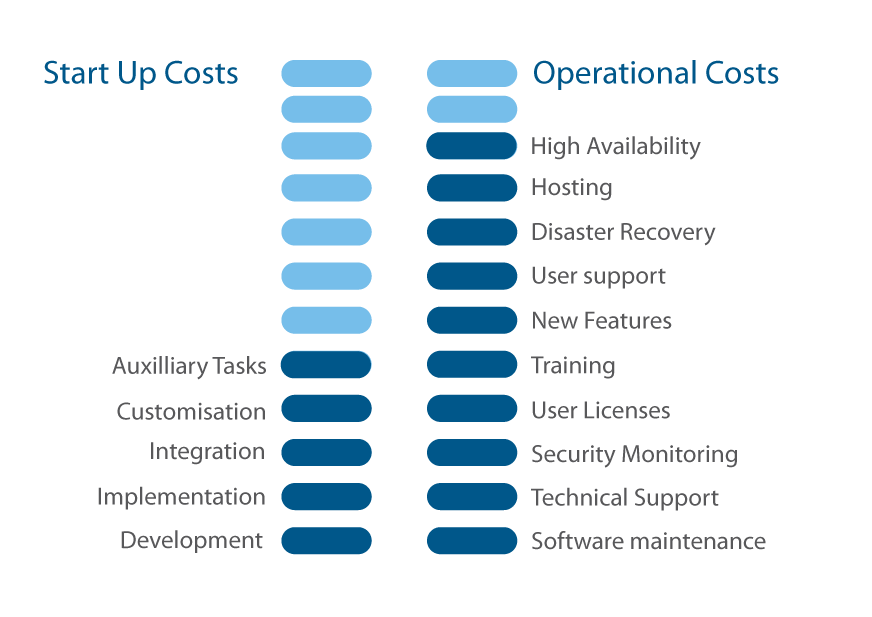
User Experience
Adoption
For large organisations with highly dispersed employees, there is a significant challenge of getting employees to download and install even one mobile app. Furthermore, people are generally quick to forget about apps they infrequently use and become apathetic when new apps are launched, especially if they’ve encountered a negative first impression.
There is a school of thought that the best and most useful apps will rise to the surface through natural selection. However, with over 19,000 new apps submitted to the Apple app store each month6, many of the best apps are being overlooked as they’re drowned amongst the sea of less impressive options.
Fragmented app adoption leads to a sub-par return on investment, and in many cases, a graveyard of failed app projects7.
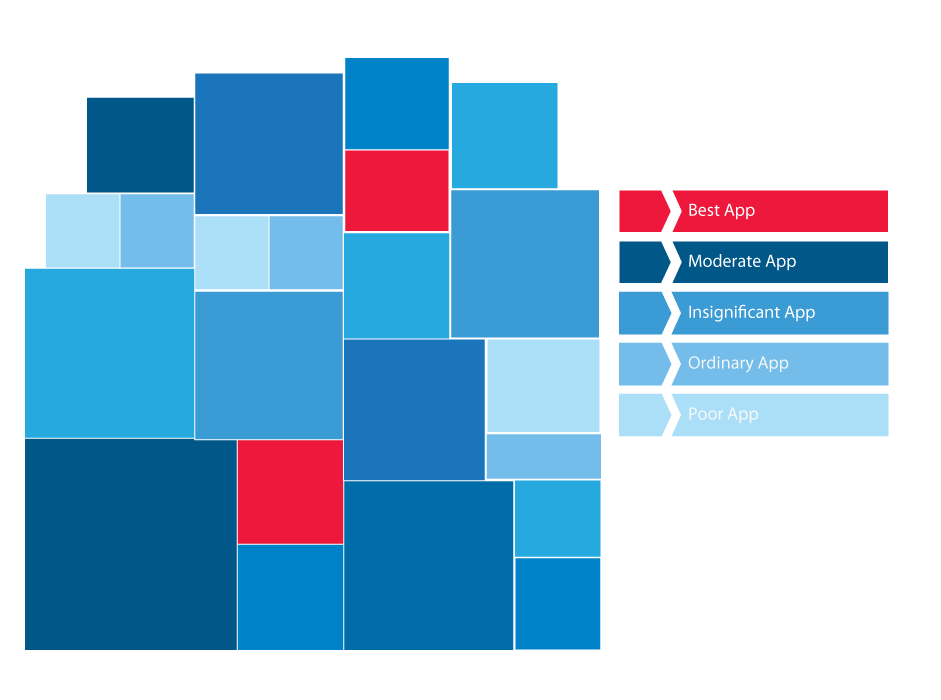
Learning Curve
In most circumstances, employees are faced with a muddle of off-the-shelf apps, hybrid apps, responsive websites in an app ‘wrapper’ and custom apps. Each of these apps invariably has an entirely different interface style and user experience; primarily because different teams with diverse stakeholders are designing them.
The key issue from an end-user perspective is that the learning curve and usability experience varies greatly between all the different apps. This results in low levels of engagement and usage, leading to increased business costs around marketing, education and change management.
We find many employees are intimidated when using business apps, and this is especially true within highly dispersed workforces in less tech-savvy industries, including retail, hospitality, building, healthcare, transport etc.
App Speed
Apps come in many shapes and sizes and are built on numerous development frameworks with varying methods of handling data securely. The result of a poorly executed app often manifests in speed deficiencies leading to frustrated and angry users8. Any enterprise with a slow app understands how this single factor can quickly kill a project and limit peoples interest in using the app. With multiple apps, it’s tough to identify and maintain speed standards across all apps.
Access to Apps
There are ways to improve employee access to downloading apps, such as deploying a Mobile Device Management (MDM) platform that creates an enterprise type of ‘app store.’ MDM platforms can also improve login and increase device security. In practice, however, MDM’s are expensive9, only solve a handful of issues and are often accessible to limited portions of the workforce. This leaves employees with a multitude of apps that are difficult to find and organise with various login issues resulting in low usage and user aggravation.
Confusing Business Processes Spanning Multiple Apps
Many business processes often span multiple apps. For example, onboarding usually involves the initial recruitment system, the new starter and induction process, entering employee information into Payroll, LMS, IT systems and gaining approvals with various notifications and workflows along the way. Which app would you open to view your recruit approvals or notifications? Perhaps you have another app just to manage your tasks and notifications? Yes, that makes sense, another app to manage other apps!
Why Micro-Apps?
But if the micro-app strategy has so many negatives, why is it so popular? Why are software vendors, mobility consultants and internal and outsourced app development teams continuing to generate a torrent of micro business apps?
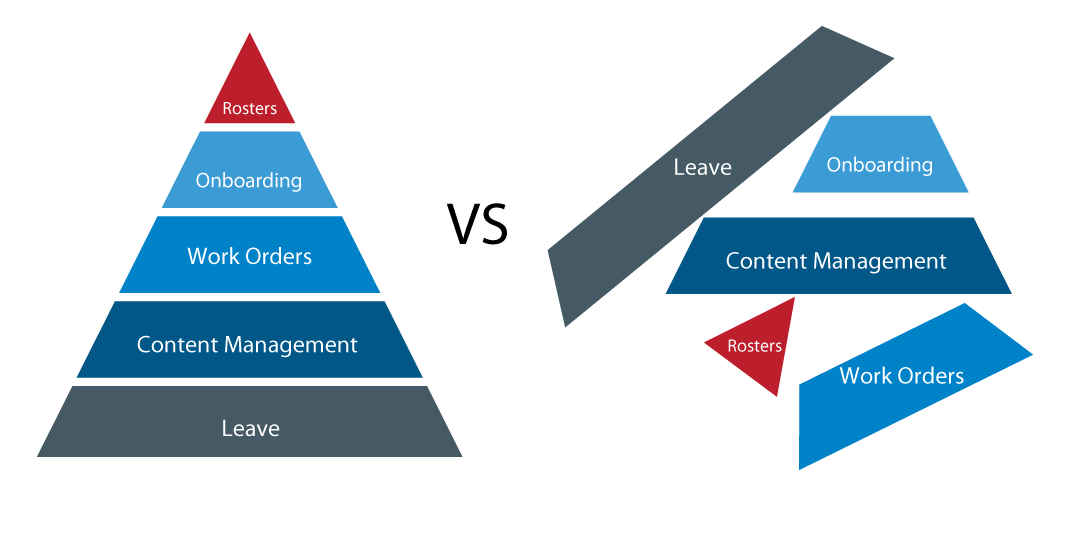
The following 7 points shed light over how this strategy has emerged and provides an insight into the external and internal forces driving micro-app adoption:
1. The Consumer App Paradigm: Many of the most successful consumer apps today are designed to perform one specific niche function really well. Think of Instagram, Twitter, Snapchat, Whatsapp, Uber, Waze, etc., each of these apps could easily be bundled into Facebook or Google or any monolithic app however they’ve retained their own identity. In fact, many of the monolithic consumer apps have been following this trend further by decoupling their features into smaller niche apps (e.g. Google Music, Movies, Games, News, etc.). Many people believe that small, niche consumer apps provide ample evidence to support the micro-app for business strategy.
2. Mobility Consultancies: Consultancies specialising in mobility solutions are amongst the most prolific evangelists of the Consumer App Paradigm and find great pride in pointing to niche consumer apps when proposing a business app strategy. Consumer apps, however, serve a different market and mimicking the niche strategy within a business results in the negative issues associated with micro-apps.
3. Off-the-shelf apps: The majority of enterprise software vendors have been very slow to introduce true mobility to their platforms due to various technical and operational reasons. It is significantly easier and more cost-effective to release micro-apps and responsive web interfaces for parts of their systems as opposed to developing a single app that provides flexibility while delivering the appropriate capabilities.
4. MDM platforms: One of the key purposes of an MDM platform is to bring together the various micro-apps into a private business ‘app store’ that is secure and easy to access. If there was a single app that handled device security, authentication and was easy to access, then the need for an MDM platform would be significantly reduced.
5. Custom app developers: Mobile app development is expensive and time-consuming. Custom app developers work to ensure the app scope is as small and easy to execute as possible. Small projects that are easier to deliver results in lots of small apps that are difficult to manage.
6. Website apps: A shortcut to delivering a mobile app is to wrap a responsive website in a mobile app skin. This offers the illusion of a mobile app but doesn’t provide the speed, functionality and reliability of a native phone app leading to a poor user experience. The attractiveness to deliver a website app in a short time and at a low-cost results in micro-app fragmentation.
7. Vanity: Business departments may seek to individualise themselves with ‘their app’ by creating a unique look and feel with a different user experience that meets the needs of business executives who are inexperienced or ambivalent to the broader impact of their actions. This results in micro-apps and a fragmented mobility strategy.
The Bottom Line
While many of the reasons for employing a micro-app strategy may not be avoidable, this doesn't negate that fact that micro-apps - when added together - have an expensive total cost of ownership equation, are time-consuming to deliver and maintain, and most importantly, result in a negative user experience.
In response to these issues, Mumba’s ‘one app, one interface’ overcomes these challenges and offers the benefits of enterprise mobility without the extended timelines, costs and usability issues associated with a micro-app strategy.
Mumba is one of the few mobility solutions for enterprise that features a single mobile app with a single interface, regardless of what the app is being used for. To achieve this, Mumba comprises various modules that are easily customised for particular business purposes.
This means that an employee, manager or senior executive simply downloads the Mumba Cloud app to access many different types of systems, processes and workflows configured and integrated into each module. The user interface is identical, regardless of the underlying system or process resulting in immediate adoption without expensive training and change management.
Mumba Cloud is a hosted solution with all maintenance, technical support, security upgrades and testing being performed by our expert team and backed by our enterprise SLA.
Mumba Cloud is proud to be tackling these important issues facing enterprise mobility and micro-app fragmentation. We welcome the opportunity to demonstrate our solution to you or please contact one of our sales consultants today.

